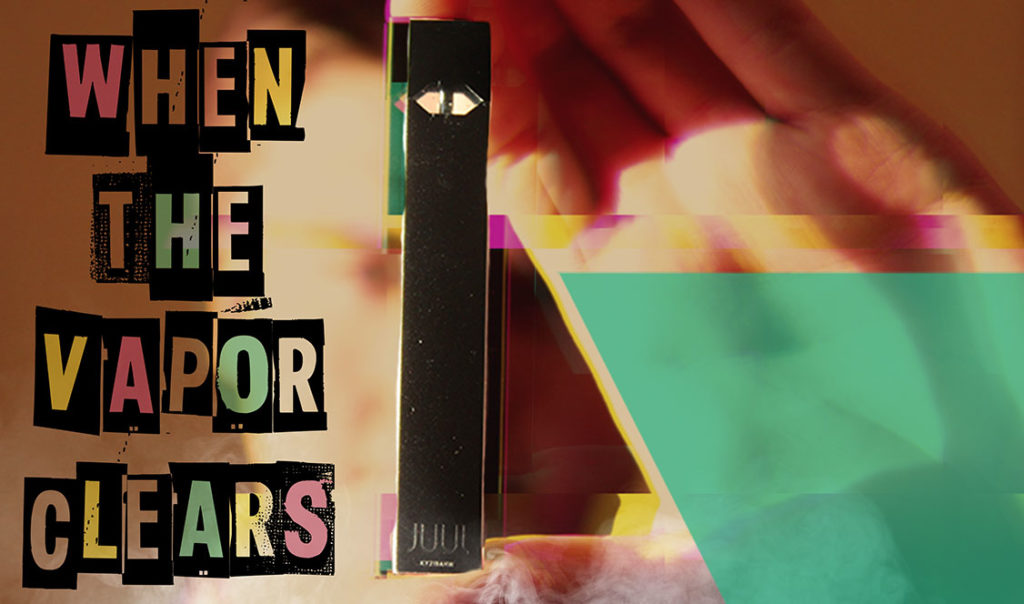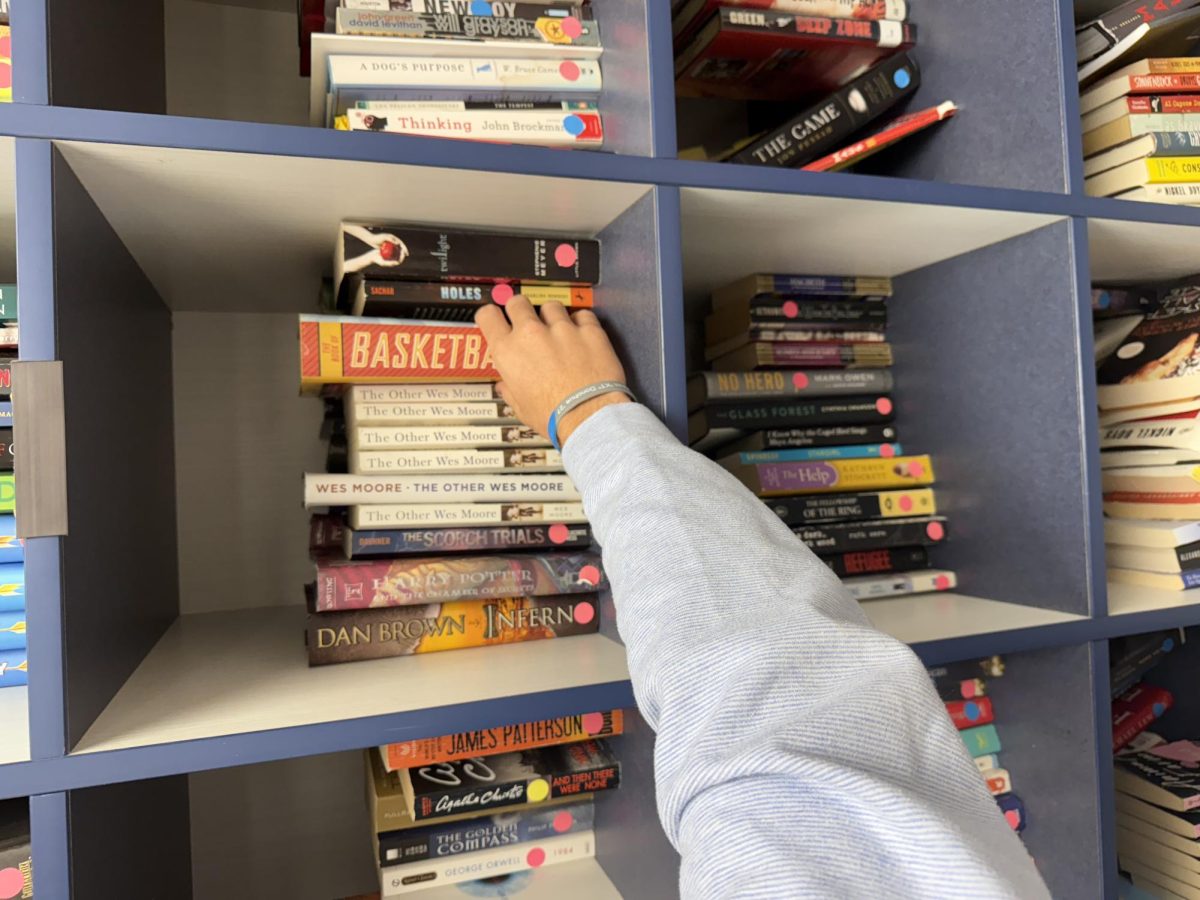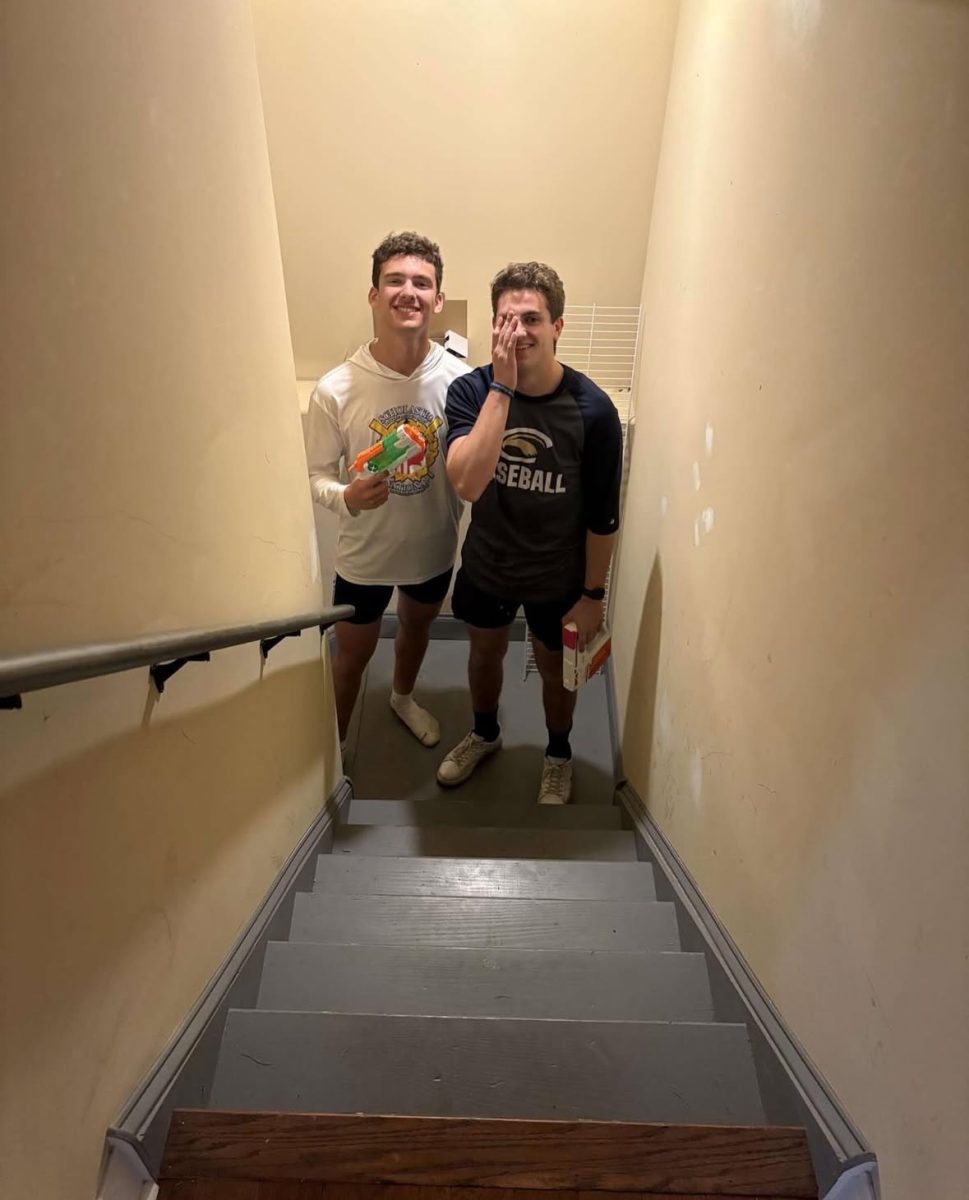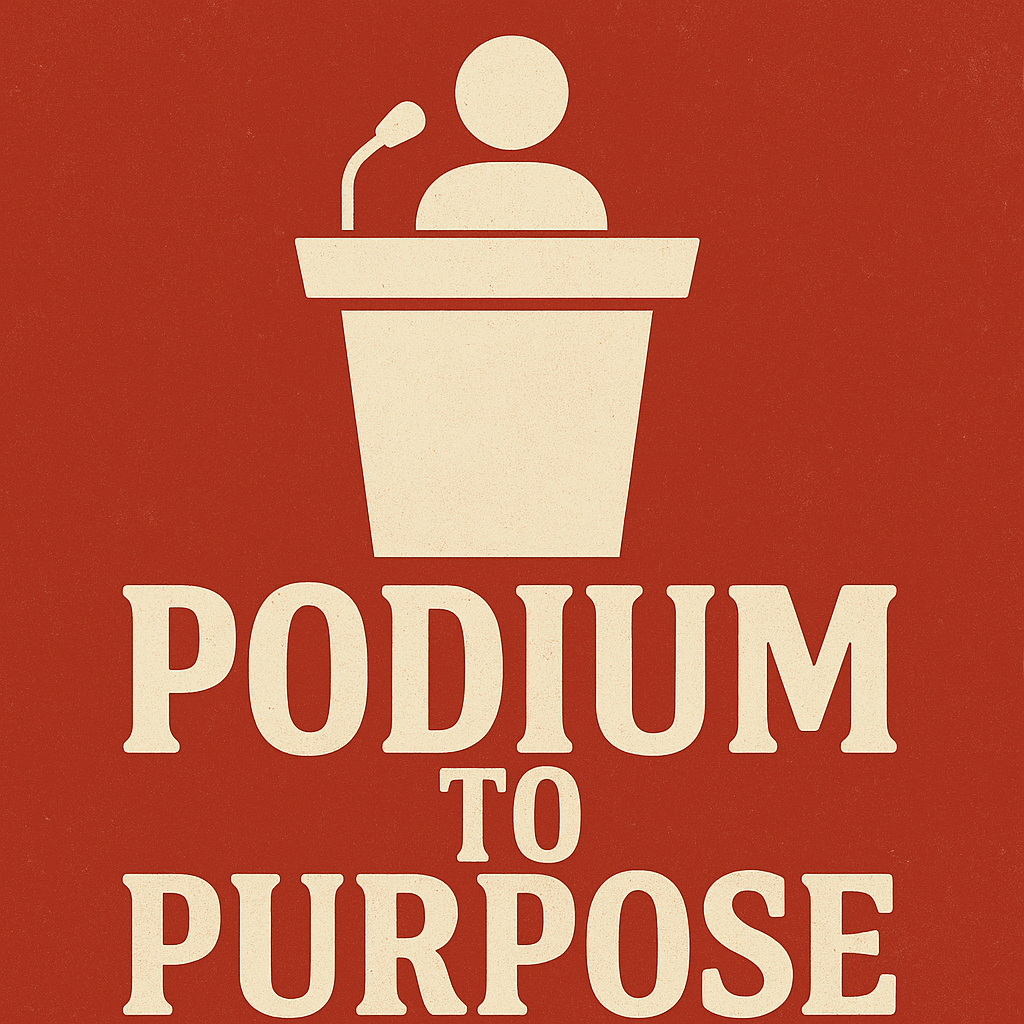Vaping is the latest infatuation of Malvern students. How prominent is it, and how damaging can it be?
On February 10, Student Council sponsored a Family Feud activity for the upper school in the Duffy Theater. Assistant Head of School for Student Life Mr. Ron Algeo asked the question, “What do Malvern students spend their time doing after school?”
In front of a crowd of teachers and hundreds of students, a contestant calmly answered, “Juul.”
The crowd of students burst into laughter, not only because it was a bold thing to say in front of teachers and administrators, but because there was an element of truth to it. That moment solidified the presence of vaping in the culture of Malvern students.
In the stalls of the downstairs Sullivan bathroom, one can walk in and expect the smell of cotton candy or strawberries. But no one’s eating in there—it’s the smell of vaporized nicotine.
“I have a Juul,” *Brian Kilgore said. “I’ve probably had it for around six months. I like using it, but it’s tough to get pods (refillable cartridges) sometimes because of my age.”
The “it” *Kilgore is referring to is an e-cigarette, an electronic device that tries to create the sensation of smoking but through the use of a liquid instead of burning. This liquid generates a vapor, which is e-cigarettes are commonly referred to as “vapes.”
These cigarette alternatives are rechargeable and come in different flavors like mango, creme brulee, and cool cucumber, which makes them more marketable to a younger audience.
The popularity of e-cigarettes has caused researchers to take a closer look at how they affect the body, especially a young one.
A pediatrician for CHOPCARE in Haverford, Dr. Susan Magargee, said that the usage of electronic nicotine devices (ENDs) can cause negative health effects.
“Nicotine exposure from ENDs can cause increased heart rate and cardiovascular [diseases],” Magargee said.
Nicotine is defined as a type of stimulant, boosting heart rate and raising energy for a short period of time. However, according to the National Institute on Drug Abuse, withdrawal from nicotine can cause irritability, depression, anxiety, fatigue, and the inability to concentrate.
According to the Center for Disease Control, the brain is the last organ to fully develop in the body, continuing until the early to mid-20s. Nicotine exposure during adolescence can disrupt the growth of brain circuits that control attention, learning, and susceptibility to addiction.
The newness of the vaping industry leaves students, teachers, and researchers without full knowledge of the long term effects.
The “For Consumers” page of the FDA states that “consumers currently have no way of knowing 1) whether e-cigarettes are safe for their intended use, or 2) about what types or concentrations of potentially harmful chemicals or what dose of nicotine they are inhaling when they use these products.”
Junior *David Fischer thinks that vapes have a negative effect—not because of the effects of nicotine, but because of the atmosphere it creates on campus.
“I do think it’s somewhat of a negative aspect in the fact that it’s creating more disciplinary drama, you know with kids getting potentially expelled, and kind of just creating a culture of fear,” *Fischer said.
*Fischer, however doesn’t blame it on kids vaping on campus. “It would be hypocritical of me to shame kids,” he said.
Nonetheless, teens have become encaptured by vaping, including the ones here at Malvern. In a survey of 107 upper school students, 65% said they have used a vaping device. According to the CDC, more than one-third of young adults nationally had tried e-cigarettes as of 2014.
“I’d say a good 80% have at least tried it,” *Fischer said.
While the majority of students have used a vape according to our survey, only 34% of students report that they actually own a vape. Most students, seem to pick up the habit through friends who have been vaping.
“I started vaping probably sometime last school year,” *Kilgore said. “I had friends that were vaping. I tried it, liked it, and ended up buying one for myself, and I still have it.”
The most popular brands of vapes among students seems to be “Juul” and “Phix.” The differences between them vary from flavors and the amounts of hits per pod.
For students at Malvern, there seems to be a pattern of never vaping before, to suddenly jumping onto the fad when a kid reaches high school. This aligns with freshman *Oliver Keller’s experience.
“I really got into [vaping] because I had friends at school that did it. I didn’t think it was something I would like, but I tried it and I did,” *Keller said. “It really started at the beginning of high school. [In] middle school I wasn’t really exposed to it, but a good amount of my friends here use a Juul or something like that.”
Many students utilize the bathroom as a place to vape in secrecy.
*James Sanders and *Chris Duckworth are two students who can be found in the bathroom vaping. They’re into it because of the high. “You get a buzz. [It is] something you can use kind of inconspicuously, without people noticing,” they said. “It makes the day go faster, [and] it’s easy to hide.”
Malvern faculty and staff are now more aware of the vaping phenomenon.
“Last year there were signs. There were empty Juul cartridges around,” Dean of Students Mr. Tim Dougherty said. “The vaping addition to the handbook was put in over the summer because we were aware it was a thing.”
The popularity of vapes, however, has since skyrocketed. “We didn’t know until early this year how widespread it was, and how many people not only do it, but own some sort of pen or vaping device,” Assistant Dean of Students Mr. Jeff Carroll said.
A punishment is definite for any student caught on campus with a Juul, Phix, or any vaping device on campus.
“Obviously the vaping devices, cartridges, and vapes are not allowed on campus so we are confiscating them and then giving the kids some detentions and demerits,” Dougherty said.
Punishments, however, can vary depending on the details of the student caught vaping.
“We have lots of kids here. We have 18-year-olds where it is legal but not on campus, but we have a lot more not 18-year-olds. Part of the problem is, kids are introducing this to younger kids, and then it becomes a problem, and then parents don’t know, and maybe some parents are okay with their kid vaping,” Dougherty said. “There are a lot of factors to consider. Selling the stuff to underage kids. If we get wind of that that is a whole other issue of endangering someone else’s well being.”
Dougherty said he has caught several students on campus using vaping products. Neither *Kilgore nor *Keller have been caught on campus, but *Kilgore is willing to risk it.
“I do use it in school, “ *Kilgore said. “Sometimes it’s just a stop into a bathroom but I try to stay away from it because some of my friends and kids I know got caught.”
Because of the sudden jump in numbers, Malvern’s administration has taken measures to combat vaping in students.
School Nurse Mrs. Carly Lynch has done research on vaping ever since it has become widespread at Malvern. “Both [School Nurse] Mrs. [Kit] McGettigan and I are trying to figure out what our roles can be for the students,” Lynch said.
Other staff efforts include teachers checking student bathrooms on occasion. “Teachers are going into bathrooms they normally wouldn’t,” Algeo said.
Most of faculty efforts consist of being aware of the signs of a student vaping on campus. “A teacher was walking down the hallway the other day and smelled cotton candy,” Algeo said. “Two months ago, if a teacher smelled cotton candy they wouldn’t have thought of anything about it, but now, they go into the bathrooms thinking it could be a kid hitting a Juul.”
Malvern is also attempting to educate students, teachers, and parents on the issue. On November 10, a meeting open to all parents was held on campus to discuss vaping.
“The conversation was excellent. We informed the parents on the information we knew, and the parents informed us on information that we didn’t know,” Algeo said.
Carroll thinks that there is more to come in terms of discussing the topic. “It gets the conversation started, but we’ll probably have a more formal meeting in the coming months,” he said.
During the latest AGE Block schedule, guest speaker Carolyn Fenkel from Center for Families spoke to students about some of the myths surrounding vaping and the use of a variety of drugs.
“The bottom line is we’re all here to support the students.” Algeo said.
Vaping has exploded not just on campus, but as an industry.
A 2015 market research study reported that the vape industry brought in $3.7 billion in the United States alone. That study also predicts that the industry will climb to more than $27 billion.
Popular philosophies of vaping advocates are that it is a healthier alternative to cigarettes, and that they can also be used to help people kick their smoking addictions.
These beliefs are also held by the owner of Vegas Vapes in Bryn Mawr, Mr. Raffi Farraj.
“We have seen a large percentage of teenage and college smokers switch from cigarettes to vapes,” Farraj said. “It’s really efficient and effective.”
Farraj has chosen his line of work based on his past experiences with smoking. He suggested that vaping led to better personal healthy.
“I have chosen this line of work, not only because I was already involved in the vaping industry, but because I was a heavy smoker who was having problems with my body. I wanted to find a way to quit smoking and at the same time enjoy the industry,” he said.
Since then, Farraj has become an advocate for the benefits of vaping.
“It is an easier delivery system for people who are just starting to vape or people who have trouble learning the technology… it is conveniently packaged, so it is an excellent transition for already heavy smokers,” he said.
While shops like Farraj’s are helpful to new users, websites like the Electric Tobacconist have sprung up to help new users choose the “right vape for them” and “enhance the user’s experience”.
“Vegas Vapes” cards everyone that comes through the door to verify that they are eighteen or older, but websites allow some young users to make purchases easily online. The official Juul website has a verification process to assure users are 21 before entering the page. But there is no regulation of how minors can get information about vaping from thousands of other websites.
Since the popularity of vape products extends across the U.S., many new organizations are trying to educate the public, especially the youth, about such a new form of nicotine intake.
The Food and Drug Administration states they are “investing in a number of public education campaigns, such as The Real Cost, Fresh Empire, and This Free Life to help educate the public—especially youth—about the dangers of regulated tobacco products.”
These feverish attempts to solve address the problem of youth vaping evoke questions of why the trend grew so fast. Perceptions of how many students are vaping vary among the student body.
“It’s definitely grown since last year,” *Fisher said. “Now it’s just everyone. Even the kids you wouldn’t expect, it’s just everyone.”
Senior Andre Quintiliani estimates that “probably eighty to ninety percent, give or take, maybe ninety-five” of the Malvern population vape, while senior Howard Yao thinks only 30% of students do “because they are bored.”
Interactions outside of school helped to stimulate the popularity of vaping.
“I think it exploded, especially [over] the summer,” Fisher said. “Because I knew a couple kids from my homeroom who [already] had one [at the start of the year].”
Carroll thinks that rapid rise may be due to vaping corporations’ methods of advertising and marketing.
“I think students are vaping now because it’s marketed to teenagers,” Carroll said. “It comes in flavors that would appeal to teenagers, and I think there’s a misconception that it’s safer than traditional cigarettes.”
Students have mixed perceptions of the dangers of vaping.
“I think in general the health effects are more positive than negative because they are designed to help you quit other nicotine addictions,” senior Ian Cullen said.
Senior O’Shaan Allison thinks around 40% of Malvern students vape, despite the fact that it may lead to health problems in the future. Allison thinks vaping could even cause “popcorn lung,” he said, “whatever the hell that is.”
Regardless of any research or the rising awareness around it, vaping has become a focal point on campus, both for students and for the administrators and teachers who are trying to combat the problem.
“There’s a cultural or social wave that is pretty steady,” Algeo said. “Some years it’s wearing Timbs, playing XBox, or owning an iPhone. Things become popular and students feel if they’re not doing it they’re left out of the loop.”
*The names of students sourced with an asterisk are pseudonyms, to protect their identities.


















